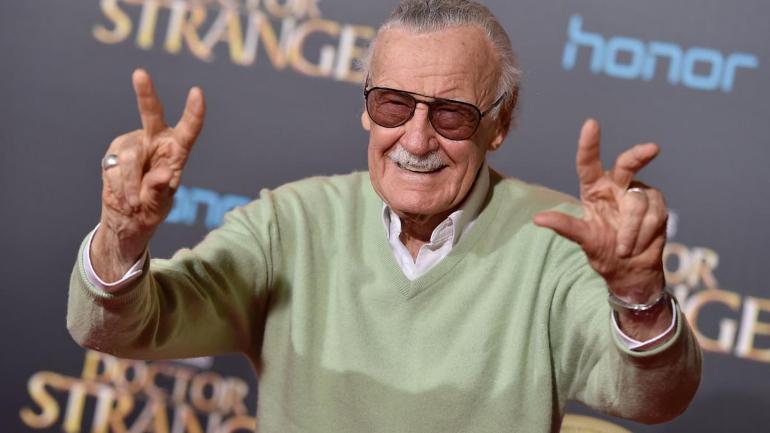In 1961, Stan Lee introduced the world to the Fantastic Four, a team of astronauts who gained exposure to cosmic rays during a scientific mission to outer space.
There was something lovable and intriguing about this dysfunctional family, who would quarrel and hold petty grudges against each other, and fight with their parents on a daily basis. What made them even more relatable was that each character would have normal and routine problems like dandruff and acne.
These four transformed Lee’s life, the future of the comic industry and the childhood of millions of his fans across the world. With Mister Fantastic, Invisible Girl, the Human Torch and Thing, Lee had created the geek culture and ushered in the golden era of comics. Geekiness was the new cool.
As he later said, being a geek was a badge of honour. “It’s geeks who really make or break a TV show or a movie or a video game. They’re the ones who are passionate about these things and who collect the paraphernalia and talk about them. A geek is really somebody interested in communication and entertainment and finding the best way to avail himself or herself to it,” Lee had once said.
THE BEGINNING
Right after Fantastic Four, fans were drawn to lonely Peter Parker’s tale, who developed ‘spidey senses’ after being bitten by a spider. And so, a gawky teenager was no longer just a sidekick in popular culture. He was a hero now.
Spider-Man was born. He could crawl up the sides of skyscrapers and jump from the highest of rooftops.
Most of us spent our childhoods hoping that if we were bitten by spiders, we could develop the same powers.
That was just how real Lee made these heroes for us. He didn’t expect us to run around fighting crime or jump from a rooftop, but he wanted us to realise how our choices could make or break us and how we had to act on them.
From comics to films, he sparked our imaginations by envisioning brilliantly flawed characters, worlds and galaxies where after an enthralling battle, good triumphed over evil. He made us sit on the edge of our seats with the most thrilling cliff-hangers, including this year’s record-breaking Avengers Infinity War.
He could see into our hearts and spin exciting stories with comic elements. These stories could make us laugh at one point, and push us into darkness in the next.
He knew how to make his audience understand the stakes.
A STAN-NING CHILDHOOD
As a child, I initially had a strong attachment to the X-Men characters more than to any other Marvel characters. I spent my time reading the comics and following the cartoon series that would come on television later, and compare the two.
Each character’s power was unique and distinct, and oddly specific. There was a character like Gambit, who could charge playing cards with kinetic energy and throw them at opponents.
Indeed, these powers had been well thought out and crafted.
To be honest, I was awed by the ‘weather-witch’ Storm and wished to have powers that could control weather as well. Or maybe even Shadowcat, the ability to walk through walls and get out of awkward situations.
What was so attractive about these characters? Was it the fact that they were flawed and so real, despite having superhuman powers? Or was it that in spite of possessing special powers, they continued to be outcasts in a cold and hostile world?
Most of the characters had painful backstories that included torture and broken families.
Their powers were also their curse, as in the case of Rogue, who could never be physically intimate with anyone as she could drain the life-force of anyone she touched.
Even the villains like the shape-shifter Mystique and Magneto had fascinating histories and origin stories.
Sometimes it was difficult to find a beginning with these stories, and there never seemed to be an end.
And as I gradually read the tales of other superheroes like Spider-Man and watched the films from the Marvel Cinematic Universe, I felt myself drawn to this rather dark world of superheroes, which was laced with anger and frustration. Yet, hope would prevail in the form of a superhero alter-ego.
But this power had to be exercised with caution, as Lee reminded us several times. That with great power comes great responsibility. Nothing came easy.
That was the raw beauty of Lee’s characters. Hulk, Iron Man, The Fantastic Four and Black Panther were real superheroes; complete, with real problems and real vulnerabilities.
THE END
With Lee’s death on November 12, an era has come to an end. The Marvel Man died at the age of 95 after battling several illnesses for a long time.
Apart from a staggering legacy, he has left behind a trail of devastated fans, who owe him their treasured memories of childhood that involved poring over comic books and discussing each superhero and their lives in vivid detail.
We never wanted to imagine a day where a Marvel film would have to begin with ‘In memory of Stan Lee’. We couldn’t imagine a film where he wouldn’t surprise us with his random cameos.
We cherished a bizarre hope that like his characters, he too would trudge on beyond death, with his cheeky and trademark grin.








